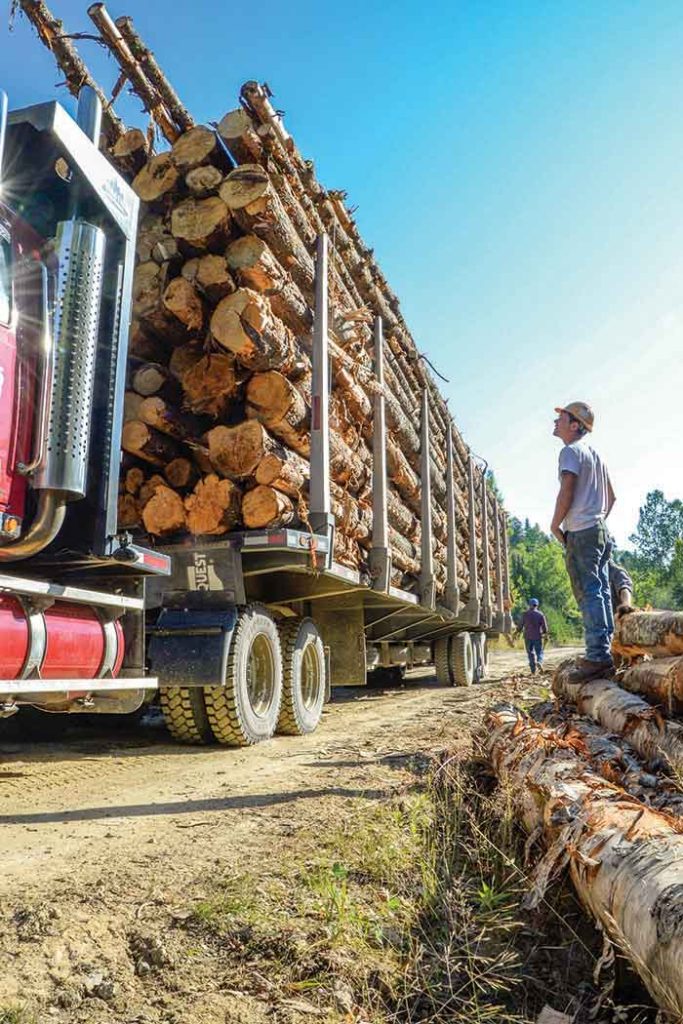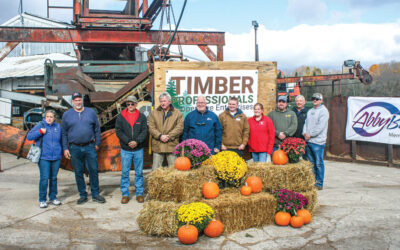Can Unprofitable Be Sustainable?
Article by Dan Shell, Western Editor, Timber Harvesting July/August 2019
 After poring over responses from 500 loggers on a 31-question survey, I’m seeing percent signs on the back of my eyelids. Yet I’m happy to do it, considering the outstanding 536-logger response to the 2019 Timber Harvesting Logger Survey. The true credit goes to those 536 who took the time to answer the questions and provide the data to build a picture of the U.S. logging contractor.
After poring over responses from 500 loggers on a 31-question survey, I’m seeing percent signs on the back of my eyelids. Yet I’m happy to do it, considering the outstanding 536-logger response to the 2019 Timber Harvesting Logger Survey. The true credit goes to those 536 who took the time to answer the questions and provide the data to build a picture of the U.S. logging contractor.
The efforts of all involved in the survey aim to show the economic health of the U.S. logging base, and to reveal the issues contractors are facing in an effort to remain viable and profitable while maintaining the capability to expand or otherwise take advantage of business-growing opportunities as they arise. As the survey shows, it’s a tall order for many loggers.
Results from many questions can be traced back to inadequate cut and haul logging rates and payment for logging services: For many contractors, there’s simply not enough revenue to offer the kind of pay scales and benefit packages that are competitive to have and attract the employees needed to operate a thriving, growing business.
Sometimes, comparing results of two questions bring up even more questions: For example, 77% of loggers believe 11% or more is a “reasonable rate of return” on their logging investment. Yet when asked their rate of return for 2018, only 22% of loggers reached their self-described reasonable level.
What makes the results especially galling is that the past three years have seen some of the strongest forest products markets in years. The first seven months of 2018 saw product category after product category, especially in lumber, setting pricing records.
There’s no doubt that mill interests have fully recovered from the Great Recession a decade ago, but what about the loggers? A healthy industry simply doesn’t have a third of its raw material supplier businesses operating unprofitably in such an environment.
A great example is health insurance, which is simply a must-offer benefit in modern America if a business owner plans to operate and grow long-term. Yet 90% of loggers aren’t able to offer employee health plans, which is a major black eye for the forest products industry.
I’ve talked to many loggers who can’t offer insurance, and seen the pain in their eyes when they say they’d love to but can’t afford it. I’ve talked to loggers who do offer health benefits, and they all say it’s a game-changer in being able to attract and keep the kind of stable, family-oriented employees that business owners are looking for.
By not offering health insurance, loggers are in effect subsidizing the mills’ procurement costs. And in an industry where employees are performing some of the most dangerous jobs in America—uninsured—well, it’s simply galling.
You hear a lot of talk about about sustainability these days, but is a supply chain with a third of its businesses unprofitable sustainable?
As part of the survey, we also asked loggers to “Raise Your Voice” and give us their comments and thoughts about their businesses and the industry. It’s one of our favorite parts of all the surveys we do, and the 2019 TH Logger Survey drew dozens of logger insights. Our biggest regret is we can’t include them all. In addition to those included in the article on page 14, here are some that stood out:
- “In the past five years fuel cost, equipment cost, insurance on equipment and workers’ comp have all gone up 15%-20%. Logging rates have not gone up at all. I believe that is why we’re seeing more and more contractors getting out, I think this will continue to be the case until things change. Loggers have enough things working against them like weather, mill quotas, high truck insurance, lack of good help, and the list goes on and on.”—Greg Malone, Benton, La.
- “Here in Tennessee things are improving,” says logger Trevor Haywood in Huntingdon. “The paper mill in Wickliffe (Kentucky) has reopened which has given us a better market. Stumpage prices are still elevated, which keeps profit margins lower than deserved, but overall conditions are good. There have been some loggers leave the business, which is good for the ones who are still here. As is the case everywhere, labor and truck drivers are a problem, along with insurance premiums.”
- “My concerns are the wood market as it continues to drop. I have had to let go of a few good men. I also have a hard time hiring truck drivers. Nobody seems to want to fill this position. I think me not having health insurance for my employees is a big issue but I cannot afford the prices and if I could afford the prices the deductible is so large that employees back away from it.”—Dean Young, Franklin, Me.
- “Line skidding is a niche that takes a certain number of people on the ground to get the job done. You have the newer contractors who will work longer days for less with the mills baiting these young guys along, telling them ‘If you buy this equipment, it will get you more work.’ But what they get is more debt, then have to (accept) working cheaper to keep the bills paid.”—Tim Christopherson, Kamiah, Id.
- “The closure of more mills around the state of Oregon is hurting the logging industry. Why is it that they can log back East and it is a booming economy, yet the Northwest is challenged at every turn? This needs to stop. We need to properly manage our forests and stop the large fires that are burning up our natural resources!”—Katharine Jones, Roseburg, Ore.
As with any survey where you offer open-ended responses, you get a good bit of anonymous yet insightful comments, such as:
“Its a bipolar profession: The highs are great, the lows are horrible and humbling.”
“The only way loggers will see an increase in rates is when enough of us go broke. The mills will then and only then increase the rates to keep their mills supplied. The ones left in business will then expand their operations to satisfy the mills and the cycle will begin again.”
“One word: Unions”
“Run a good honest business so you are worth more to the mill.”
“Be recognized as a viable part of the wood flow system and not just a cost to the mills!”
“(We need) loggers to come together and keep out the middle men who cheat the timber prices, and for loggers to stop “cut throating” each other. I have receipts where 15 years ago sawtimber prices were higher and equipment and repairs and fuel were cheaper. Lumber prices tripled and they drop the log price. A logger should be able to profit 5% to 10% of his money. And those are low ball numbers.”
Going forward, the plan is to conduct the Timber Harvesting Logger Survey with its profile questions every other year, and to delve into specific issues with surveys on the off years. Again, special thanks goes out to the 500-plus TH readers who took the effort to respond. We couldn’t do it without you.
Latest News
Logger Co-op Launches Wisconsin Chip Mill
Logger Co-op Launches Wisconsin Chip MillA precedent-setting milestone was marked in Tilleda, Wis., with the launch of the United States’ first chip mill owned and operated by a logger cooperative—a...
West Fraser To Idle Mills In Georgia, British Columbia
West Fraser To Idle Mills In Georgia, British ColumbiaWest Fraser Timber Co. Ltd. announced in early November it will permanently close both its Augusta, Ga. and 100 Mile House, British Columbia...
New Komatsu Full-Service Distribution Center In Alberta Set To Open In Early 2026
New Komatsu Full-Service Distribution Center In Alberta Set To Open In Early 2026Komatsu is strengthening its commitment to Canadian customers with a major investment to double the size of its parts...
New From Husqvarna: 564 XP Fuel-Injected Pro Saw
New From Husqvarna: 564 XP Fuel-Injected Pro Saw The Husqvarna 564 XP is a groundbreaking 60 cc chainsaw designed for forestry and tree care professionals who demand cutting-edge performance....
WANT MORE CONTENT?
Spanning seven decades since its inception in 1952, Timber Harvesting highlights innovative and successful logging operations across the U.S. and around the world. Timber Harvesting also emphasizes new technology and provides the best marketing vehicle for the industry’s suppliers to reach the largest number of loggers in North America and beyond.
Call Us: 800.669.5613


